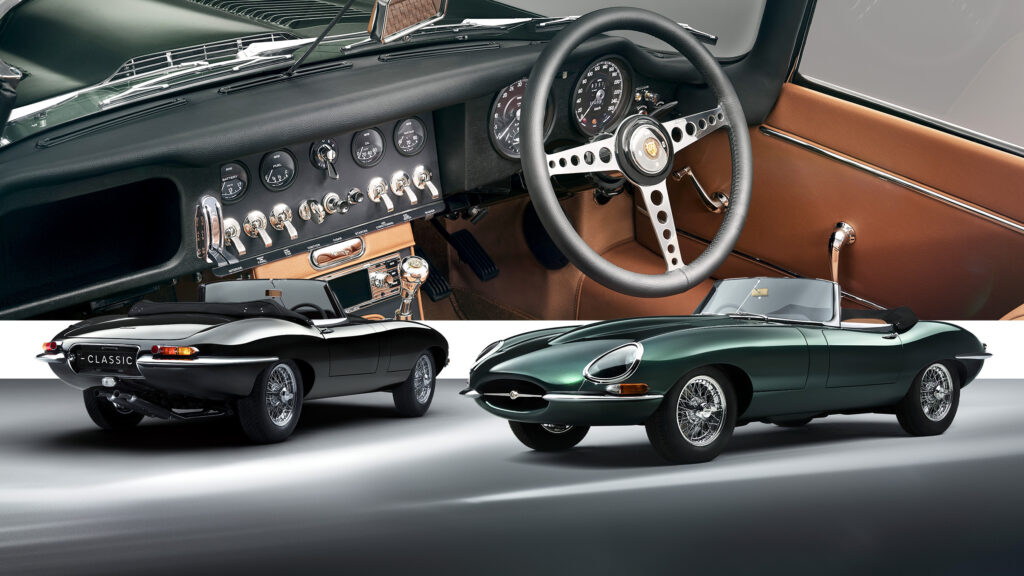- Jaguar built two special E-Type Series I drophead coupe models for a very special customer in Southeast Asia.
- They feature bespoke jewelry including a mother of pear, hallmarked solid silver, and gold.
Jaguar Classic introduced a special pair of E-Types, adorned by bespoke jewellery. Unlike previous builds that were restored to perfection, these were made from scratch, celebrating 50 years from the end of E-Type production in 1974.
The two models were created for a “loyal, discerning client in Southeast Asia”, and took over 2,000 hours to complete. The company describes the commissions as “the finest examples of Works Bespoke creations by Jaguar Classic”, adding that they won’t be replicated.
More: Jaguar To Stop New Car Sales For A Year In Key Markets During EV Transition
The first new E-Types in half a century were inspired by the final 50 Commemorative Editions built in 1974. Both are Series I drophead coupes, finished in Signet Green and Opal Black.
The absolute highlight of the reborn classics is Jaguar’s collaboration with Deakin & Francis, England’s oldest manufacturing jeweller, founded in 1786. The result is a precious mother of pearl, hallmarked solid silver accents, and 18-carat gold details, adding to the uniqueness of the builds.
The jewelry is not the only bespoke feature inside the cabin. The seats are upholstered by Bridge of Weir tan leather which is hand-woven and stitched. The center console is made of anodized aluminum, bearing an engraving of a Series I E-type blueprint taken from the Jaguar archives. Furthermore, Jaguar added a modern yet discreet radio with Bluetooth connectivity, and a heated windscreen.
Both models are fitted with a 3.8-liter straight-six engine, which has been upgraded with electronic fuel injection. Furthermore, engineers traded the original four-speed manual gearbox for an improved five-speed manual, making life easier for the driver – in case he decides to drive them.
The company didn’t reveal the cost of the two newly built Jaguar Classic E‑type Commemorative units. However, it is safe to assume they were more expensive than the factory-restored units from a few years ago.






















